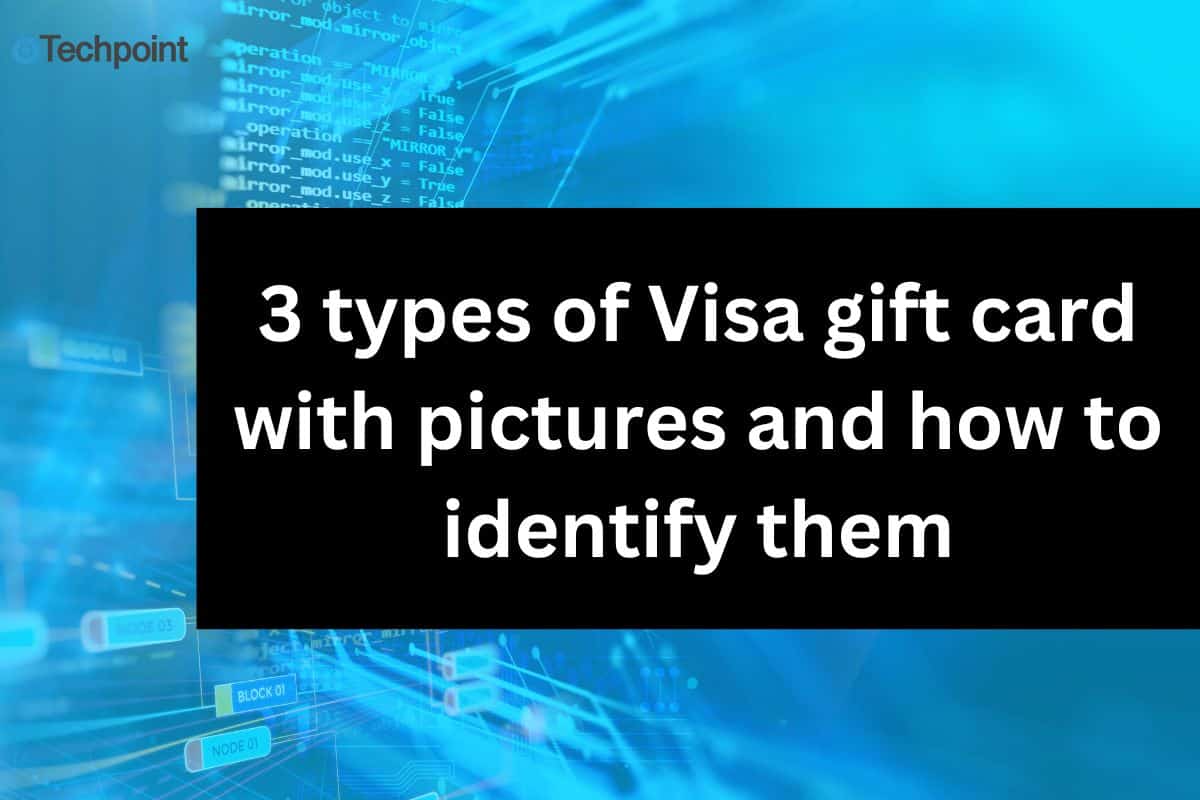Ever walked into a store, spotted multiple Visa gift cards, and thought, “Wait, aren’t these the same thing?” You’re not alone.
Years ago, I was that person—cluelessly holding two different Visa gift cards, both from the same trip, yet they somehow didn’t look or function alike. If you’ve ever pondered over the numerous variations of a single brand, you’re not alone.
Over time, I conducted a thorough investigation into the vast world of gift cards, and now I am prepared to share all the insights I gained. This guide will help you explore the various aspects of Visa gift cards and quickly identify their distinctions.
Ready to see what sets them apart? Let’s dive in!
Key takeaways
- Standard Visa gift cards take up to seven years before they expire.
- If you want to personalize your Visa gift cards, a custom Visa gift card is your best friend!
- Visa e-Gift cards are your go-to cards for making online payments.
- Vanilla Visa gift cards are popular prepaid cards that are accepted anywhere Visa cards are accepted.
3 Different types of Visa gift cards
1. Standard Visa Gift Card
Standard Visa gift cards are the most commonly found Visa gift cards. You can easily find them in retail stores that sell gift cards. Standard gift cards come preloaded with a specific amount of money that can be used to make online and offline transactions.
The distinct thing about a standard Visa gift card is that it takes up to seven years before it expires, meaning that once you have redeemed this Visa gift card, you do not have to worry about using up the funds in it in a hurry as it takes a longer time to expire.
The standard Visa gift card also starts with numbers like these: 4020, 4358, 4786, 5338, 4097, 5338, and 4852. A clear picture is below if you are still wondering what a standard Visa gift card looks like.
2. Custom Visa Gift Card
If you have ever been gifted a Visa gift card with images, designs, or your name inscribed, that is a custom Visa gift card.
Visa allows users to become creative by customizing photos, designs, messages, birthdays, etc. on their gift cards for themselves or as a gift to loved ones. Below is a picture of what a custom Visa won’t card looks like.
3. Visa e-Gift Card
A Visa e-Gift card is the digital form of a Visa gift card. It has the features of the physical Visa gift cards; however, unlike the physical gift cards like the Standard Visa won’t cards that you can purchase and get delivered to your doorstep, a Visa e-Gift card is sent to your email address or messaging app when you purchase it.
As mentioned earlier, it has the features of a physical gift card and holds the same monetary value as a physical Visa gift card. This means if you have $500 on a standard Visa gift card and $500 on a Visa e-Gift card, the values are the same, with none bigger than the other.
Below is a picture of what a Visa e-Gift Card looks like.
How To Identify Genuine Visa Gift Cards
1. The first step to identifying a genuine Visa gift card is to look for the Visa logo, which is Visa’s trademark and is always present on both digital and physical cards.
Do not buy a gift card if the Visa logo body is not inscribed on it, no matter how convincing the merchant is.
2. Every Visa gift card has an expiration date boldly written on it. Therefore, always check the card’s expiration date before purchasing it.
3. Another way to identify a genuine Visa gift card is to look at the card number. Every authentic Visa gift card has a 16-digit number that is boldly inscribed on the card and evenly spaced. If you don’t see this, do not buy it.
4. If you are buying a physical Visa gift card, it always comes sealed. If you find the sealed tampered already, do not buy.
5. Check for the barcode or signature line on the back of the card. If it is not there, Visa did not issue the card, and you should not purchase it.
Wrapping Up
Now that you know the different Visa gift cards on the market and how to identify them, please share this blog post with others so they can gain the same enlightenment.
You say you will share? Good!
Enjoy the rest of the day.
DISCLAIMER!
“This publication, review, or article (“Content”) is based on our independent evaluation and is subjective, reflecting our opinions, which may differ from others’ perspectives or experiences. We do not guarantee the accuracy or completeness of the content and disclaim responsibility for any errors or omissions it may contain.
The information provided is not investment advice and should not be treated as such, as products or services may change after publication. By engaging with our content, you acknowledge its subjective nature and agree not to hold us liable for any losses or damages arising from your reliance on the information provided.
Always conduct your own research and consult professionals where necessary.”











